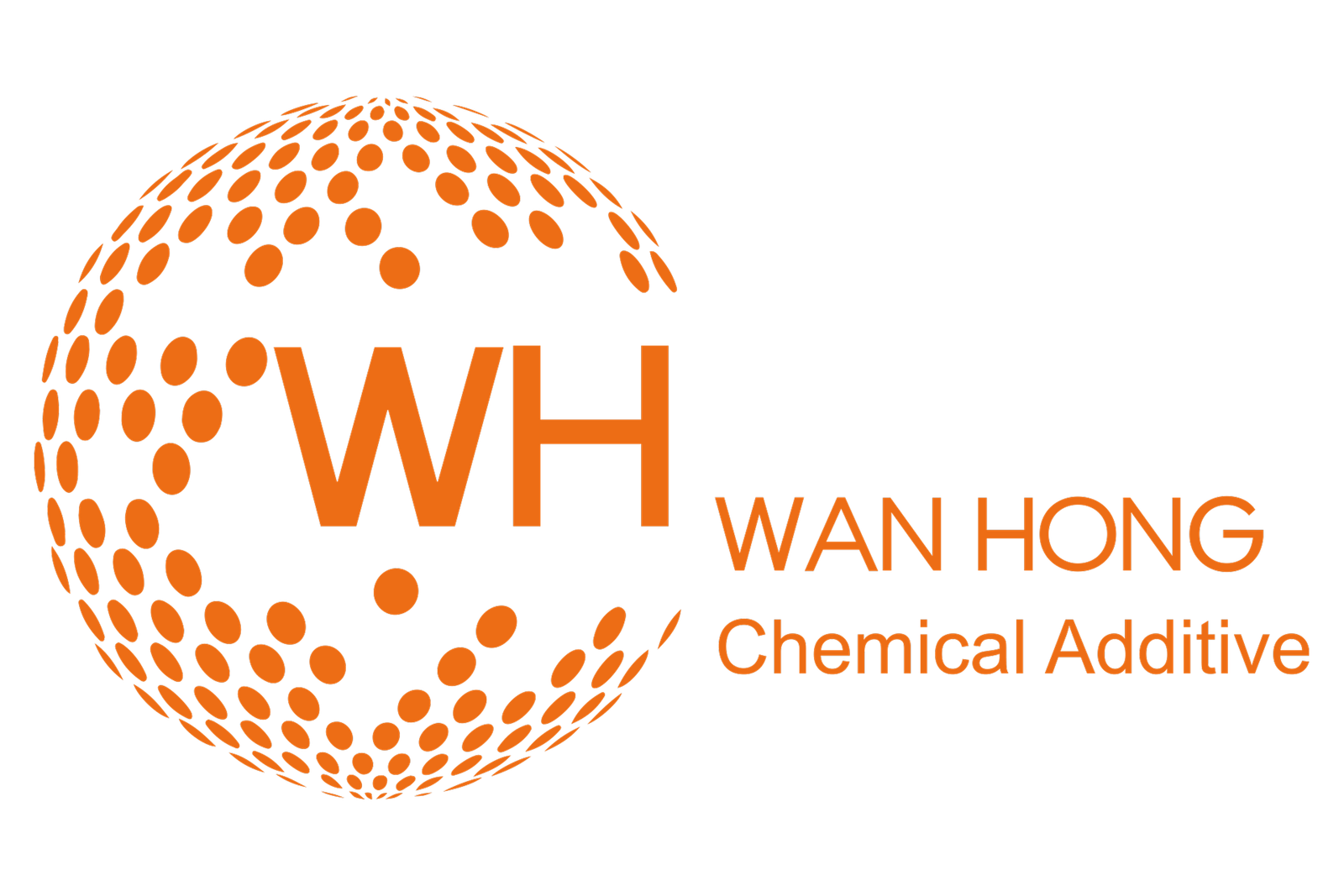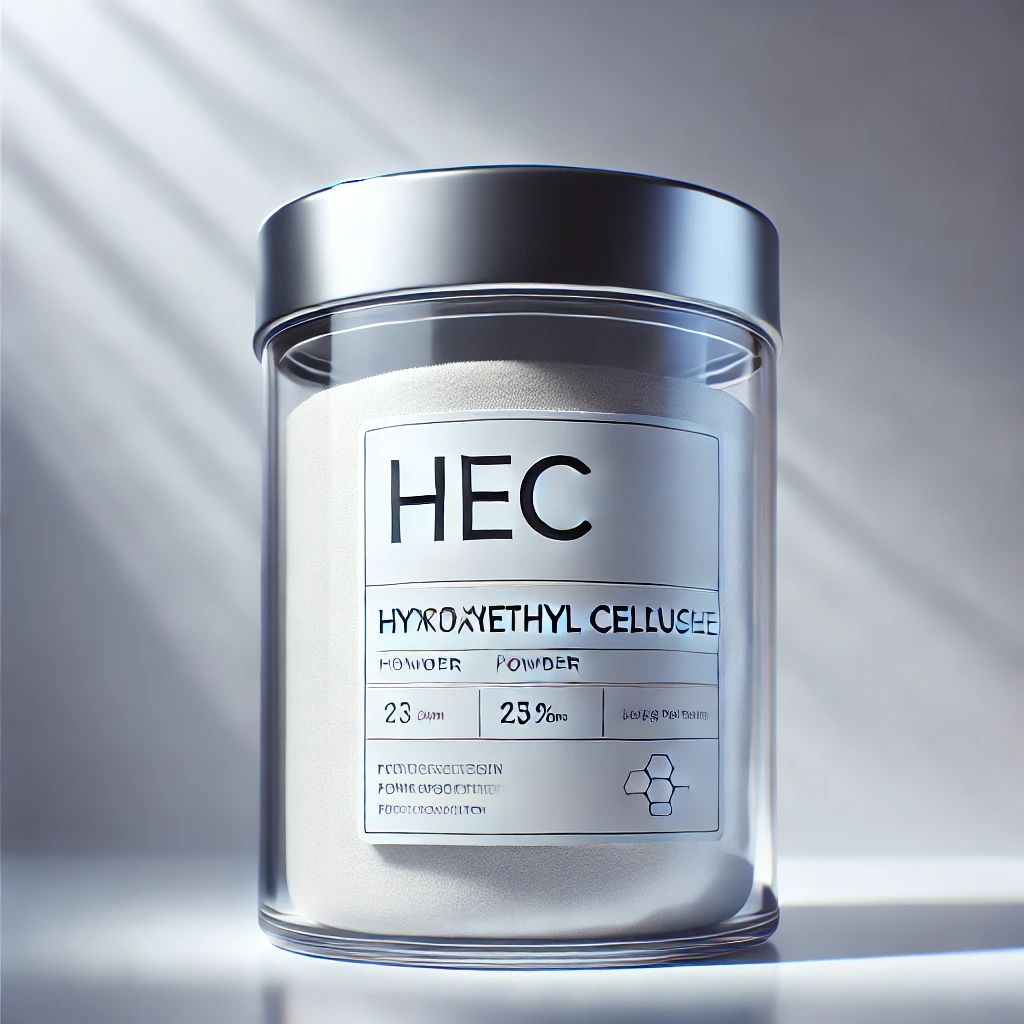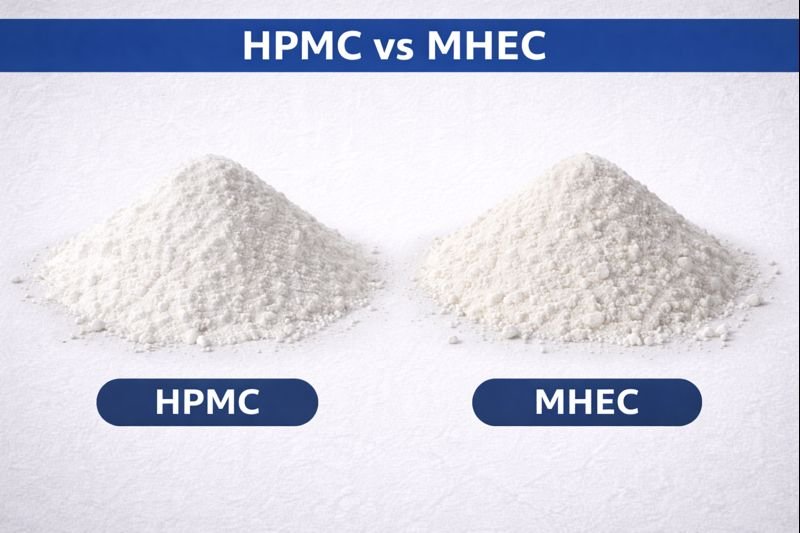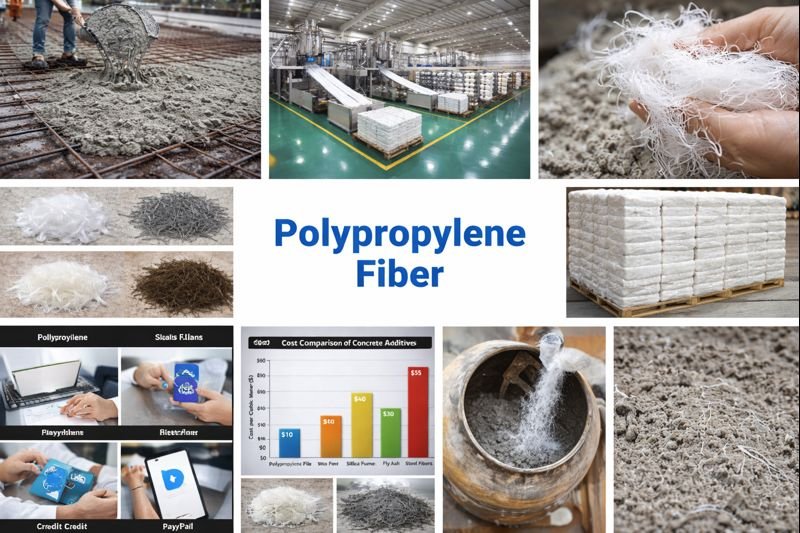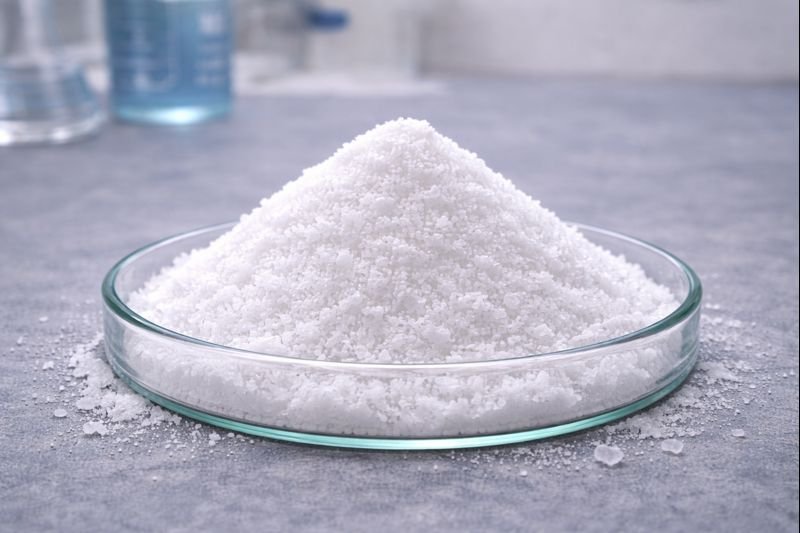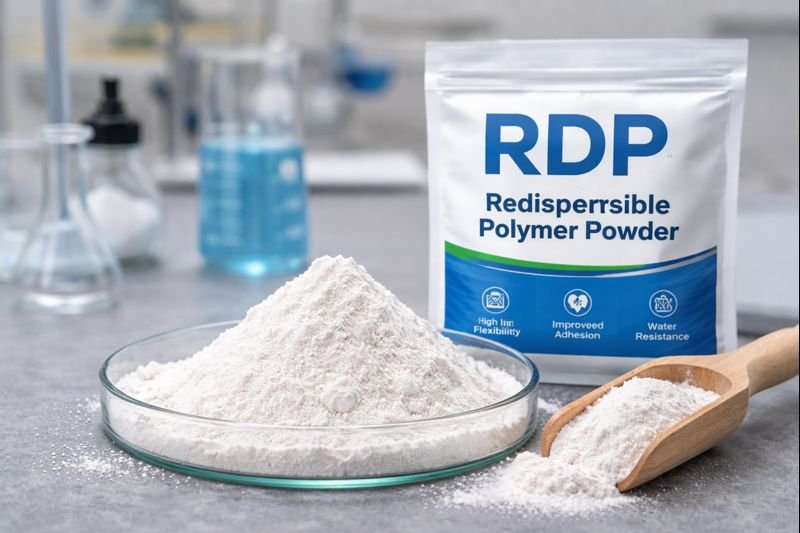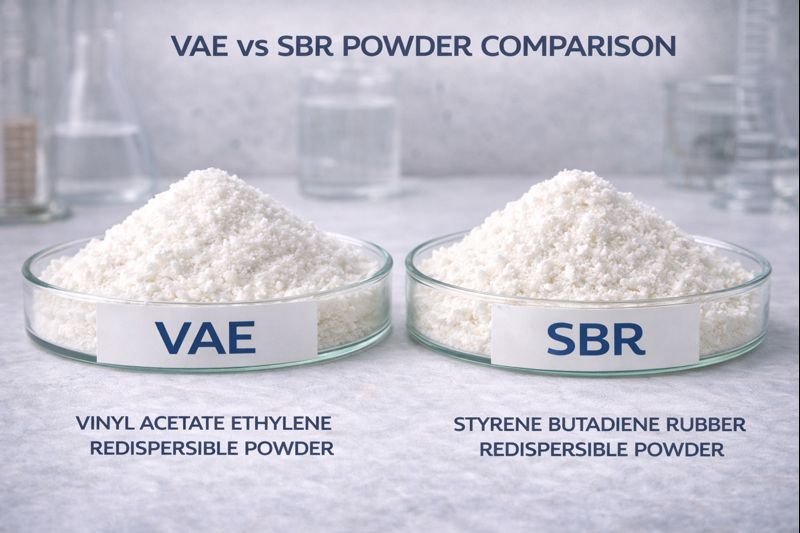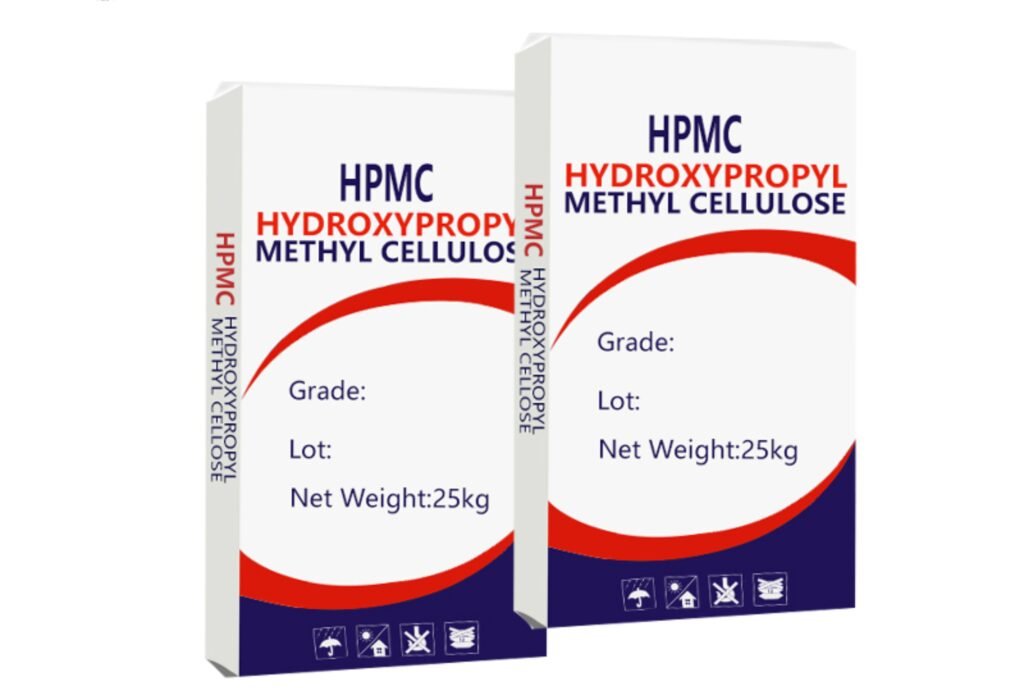Are you struggling with thickening issues in your paints or construction materials? Poor viscosity control can ruin product performance and waste valuable resources. Many manufacturers face this exact problem daily.
Hydroxy Ethyl Cellulose (HEC) is a water-soluble polymer derived from cellulose that functions as an effective thickener, binder, stabilizer, and film-former in various industrial applications. It provides excellent viscosity control, is environmentally friendly, and compatible with many formulations.
At Wanhong, we've been producing high-quality cellulose ethers for over 15 years. Our clients often tell us they switched to our HEC products after struggling with inconsistent performance from other suppliers. Let me explain why HEC has become such an important ingredient across many industries and how it can solve common formulation challenges.
What is Hydroxy Ethyl Cellulose (HEC)?
Do you know what makes HEC different from other cellulose derivatives? The chemical structure creates unique properties that make it perfect for specific applications where other thickeners fail.
Hydroxy Ethyl Cellulose1 is a non-ionic, water-soluble polymer made by treating cellulose with sodium hydroxide followed by reaction with ethylene oxide. Its molecular structure contains hydroxyethyl groups attached to the cellulose backbone, giving it excellent water solubility and thickening properties.
HEC comes in various grades based on viscosity, molecular weight, and degree of substitution. These different grades allow for customization based on specific application needs. At Kehao, we produce HEC with viscosities ranging from low (10-50 mPa·s) to ultra-high (100,000+ mPa·s).
The production process involves several key steps. First, high-purity cellulose (usually from cotton or wood pulp) is treated with sodium hydroxide to create alkali cellulose. This is then reacted with ethylene oxide under controlled conditions. The resulting product is purified, dried, and milled to the desired particle size.
HEC differs from other cellulose ethers like HPMC (Hydroxypropyl Methylcellulose) or CMC (Carboxymethyl Cellulose) in several ways. Unlike HPMC, HEC doesn't have thermal gelation properties, making it more stable in hot water applications. Compared to CMC, HEC is non-ionic, giving it better compatibility with cationic ingredients.
The key physical properties of HEC include:
| Property | Characteristics |
|---|---|
| Appearance | White to off-white powder |
| Solubility | Readily soluble in cold or hot water |
| pH Stability | Stable from pH 2-12 |
| Thermal Stability | Good resistance to thermal degradation |
| Biodegradability | Environmentally friendly and biodegradable |
Industrial Applications of HEC - Where Can You Use It?
Have you wondered why so many industries rely on HEC? From construction to personal care products, HEC solves critical formulation challenges that other additives simply can't handle.
HEC is widely used in construction (as a water retention agent in cement, tile adhesives, and joint compounds), paints and coatings (as a thickener and stabilizer), personal care products (in shampoos and cosmetics), pharmaceuticals (as a binder in tablets), and oil drilling (as a fluid loss control agent).

HEC plays a crucial role across numerous industries due to its versatile functionality. In the construction sector, HEC improves workability of cement-based products by enhancing water retention. This prevents rapid drying and improves adhesion strength. For example, in tile adhesives, HEC extends open time, allowing tile installers more working time before the adhesive sets.
In the paint and coatings industry, HEC serves as both a thickener and stabilizer. It provides proper viscosity during application while preventing pigment settling during storage. Our clients in Saudi Arabia and UAE have reported excellent results using our HEC in exterior paints, especially in their challenging hot climate conditions.
The personal care industry values HEC for its film-forming properties and thickening capabilities in shampoos, conditioners, and various cosmetic formulations. Because HEC is non-ionic, it's compatible with most surfactants and active ingredients commonly used in these products.
Pharmaceutical manufacturers use HEC as a binder in tablet formulations and as a thickening agent in liquid medications. Its stability across a wide pH range makes it particularly valuable in various drug delivery systems.
In the oil drilling industry, HEC functions as a fluid loss control agent in drilling muds. It forms a protective film that prevents fluid loss into porous formations during drilling operations. Several of our clients in the Middle East have switched to our HEC because of its consistent performance in high-temperature drilling environments.
| Industry | Key Applications | Benefits |
|---|---|---|
| Construction | Cement, tile adhesives, joint compounds | Water retention, extended workability |
| Paints & Coatings | Water-based paints, primers | Thickening, anti-settling, leveling |
| Personal Care | Shampoos, lotions, gels | Thickening, stabilizing, film-forming |
| Pharmaceuticals | Tablets, liquid medications | Binding, controlled release |
| Oil Drilling | Drilling fluids, completion fluids | Fluid loss control, viscosity modification |
Benefits of HEC - Why Choose It Over Alternatives?
Are you still deciding between different thickening agents? Understanding the specific advantages of HEC could help you make the right choice for your product formulations.
HEC offers excellent thickening efficiency, stable viscosity across varying pH levels, compatibility with many ingredients, and biodegradability. Unlike some alternatives, it provides smooth flow properties, doesn't contribute to microbial growth, and performs consistently in challenging environmental conditions.
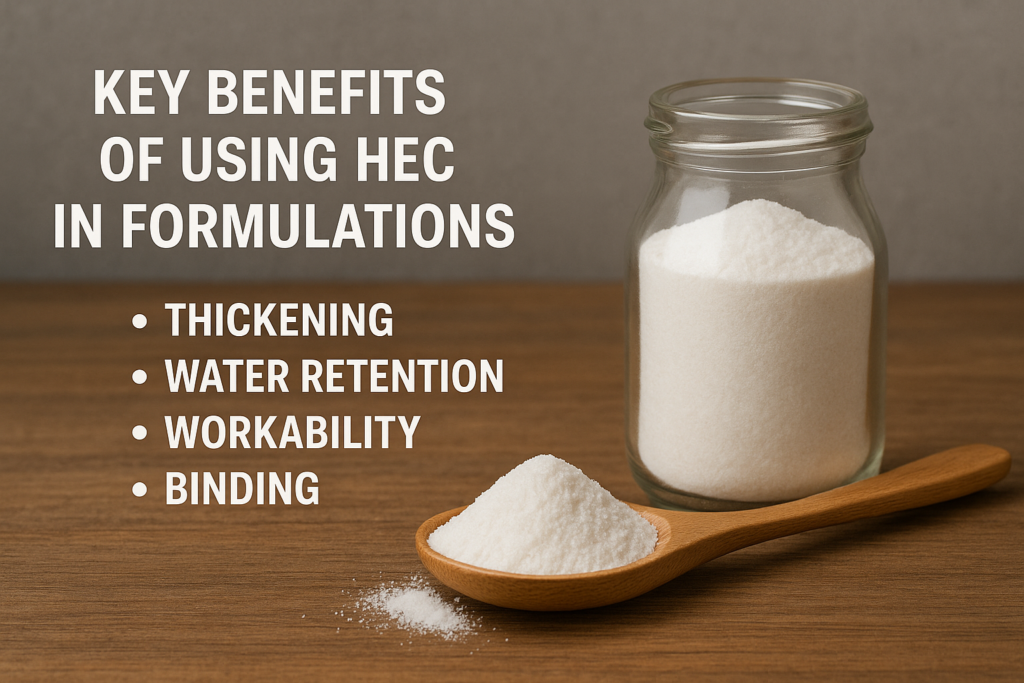
When comparing HEC to other thickening agents, several advantages become clear. Most notably, HEC provides superior water retention compared to many synthetic thickeners. This property is particularly valuable in construction applications where preventing premature water loss is critical for proper curing.
The environmental profile of HEC is another significant benefit. As a cellulose derivative, HEC is biodegradable and comes from renewable resources. This aligns with the growing global emphasis on sustainable ingredients. Many of our customers in Europe and North America specifically request HEC for this reason, as they face increasing regulatory pressure to use environmentally friendly materials.
From a processing standpoint, HEC offers excellent cold-water solubility. This eliminates the need for heating during preparation, saving energy and simplifying manufacturing processes. A client in Brazil recently switched from a synthetic thickener to our HEC, reporting a 15% reduction in energy costs during their production process.
Stability across a wide pH range (2-12) means HEC can be used in both acidic and alkaline formulations without degradation. This versatility simplifies inventory management since the same thickener works across multiple product lines.
HEC also maintains its viscosity properties over a broader temperature range than many alternatives. This is particularly important for products that will be stored or used in varied climate conditions. Our clients in regions with extreme temperatures, like Saudi Arabia and India, value this stability tremendously.
Unlike some thickeners that can cause unsightly flocculation or compatibility issues, HEC typically blends harmoniously with other ingredients, including surfactants, salts, and various polymers. This compatibility reduces formulation challenges and quality control issues.
| Benefit | Description | Real-World Impact |
|---|---|---|
| Water Retention | Prevents premature drying | Improved curing in cement applications |
| pH Stability | Effective from pH 2-12 | Versatility across different formulations |
| Temperature Tolerance | Maintains properties in heat/cold | Consistent performance in varied climates |
| Biodegradability | Environmentally friendly | Meets increasing regulatory requirements |
| Compatibility | Works with various ingredients | Simplified formulation process |
| Processing Ease | Cold-water soluble | Energy savings during manufacturing |
How to Use HEC Effectively?
Are you unsure about the best ways to incorporate HEC into your formulations? Proper dispersion techniques and dosage considerations can make a significant difference in achieving optimal performance.
To use HEC effectively, disperse it into water under moderate agitation, avoiding lumping by using a vortex method or premixing with other dry ingredients. Typical dosages range from 0.2-2.0% depending on the application, with higher concentrations needed for greater thickening power.

Proper dispersion of HEC is crucial for achieving optimal performance. The most common mistake I see clients make is adding HEC powder directly into water without proper technique, resulting in fisheye formation (undispersed lumps). To avoid this, I recommend using the "vortex method" - creating a vortex in the water with moderate agitation, then slowly adding the HEC powder into the vortex.
For large-scale industrial applications, an eductor system can significantly improve dispersion efficiency. This equipment creates a vacuum that draws the powder into a high-velocity liquid stream, ensuring rapid wetting and dispersion. Several of our customers in Mexico and India have implemented this system with excellent results.
Dosage considerations vary by application. For general guidelines:
| Application | Typical Dosage Range | Notes |
|---|---|---|
| Construction Adhesives | 0.3-0.6% | Higher levels for increased water retention |
| Latex Paints | 0.2-0.5% | Combined with other rheology modifiers |
| Personal Care Products | 0.5-2.0% | Depends on desired viscosity |
| Pharmaceuticals | 0.1-1.0% | Lower levels for binding, higher for gel formation |
| Drilling Fluids | 0.1-0.5% | Often used with other viscosifiers |
HEC performs optimally within specific pH ranges. While it's stable across pH 2-12, the viscosity development is most efficient in the pH range of 6.5-8.0. When formulating in more extreme pH environments, slightly higher dosages may be required to achieve the desired thickening effect.
Temperature also impacts dissolution time. Cold water (below 10°C) will significantly slow dissolution, potentially taking hours for complete hydration. Warm water (25-40°C) allows for much faster hydration, usually within 15-30 minutes. However, very hot water (above 60°C) should be avoided as it can potentially degrade the polymer.
Sequential addition is another important consideration. When formulating products with multiple ingredients, I recommend adding HEC after any pH adjusters but before active ingredients or preservatives. This sequence helps ensure complete hydration of the HEC before it interacts with other formulation components.
For long-term storage stability, properly preserved solutions of HEC can maintain consistent viscosity for 6-12 months. However, unpreserved solutions are susceptible to microbial degradation. We typically recommend using broad-spectrum preservatives if the HEC solution will be stored rather than used immediately.
Conclusion
HEC is a versatile, environmentally friendly thickener that offers excellent viscosity control across multiple industries. From construction to personal care, its unique properties solve formulation challenges effectively. At Kehao, we're ready to help you find the perfect HEC grade for your specific needs.
-
Explore the unique properties of Hydroxy Ethyl Cellulose to understand its applications and advantages over other thickeners. ↩
